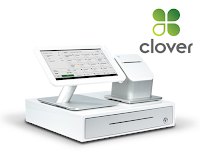Processing Credit Cards, The Basics
Processing Credit Cards
The basics
The world of credit card acceptance
is complex, and there are a number of ways to accept credit card. Some of which
require different types of hardware and software, and relationships with credit
card processing companies.
Security
First and Foremost
Taking credit card payments requires
you to sign an agreement to uphold the Payment Card Industry Data Security Standard, commonly known as PCI. Any method will require some vigilance, like
making sure payment hardware and software is secured, but some will be more
security-intensive than others. For instance, using a manual card swiper
(described below) will require that you document and enforce procedures for
handling and subsequently destroying imprinter slips, while using a terminal or
online payment method — which makes it harder for anyone to get at credit card
information — requires less of a technical effort.
Violating the PCI requirements can
result in a substantial fine and the loss of your ability to accept credit card payments. If the card data gets into the wrong hands, you also risk losing a customers
trust.
Three
Steps to Processing Credit Cards
Weighing your options for the processing of credit card payments
requires a basic understanding of how the system works.
- Collect and enter credit card information. In order to process a payment, you'll need to collect the credit card information from the person making the payment and transfer it – either electronically or manually – to a service that can actually process it. This step can range from writing down the card information and sending it to your bank to typing it into an online system or swiping the card through a specific kind of card processing terminal.
- Authorize and commit the charge. Once the payment information is entered, it's transferred electronically to a payment processor that authorizes it by checking to see that the credit card processing account exists and has enough money to cover the charge. The processor then charges the card.
- Deposit money to bank account. Once the card has been charged, there's a critical step: receiving the money. The payment processor always deposits the money in a bank account called a "merchant account." Money is then automatically transferred from your merchant account into a bank account from which you can actually withdraw it.
For most of the methods covered
here, you'll need to open a merchant account through a qualified payment processor. Like any financial account, you'll want to shop around, as rates vary.
These accounts define the base amount you'll pay for each transaction.
Rob Olson
Quantum Merchant Services
1-888-881-0657 ext 707



Comments
Post a Comment